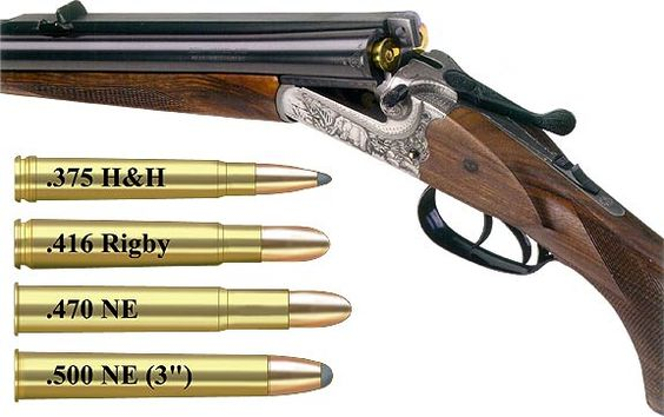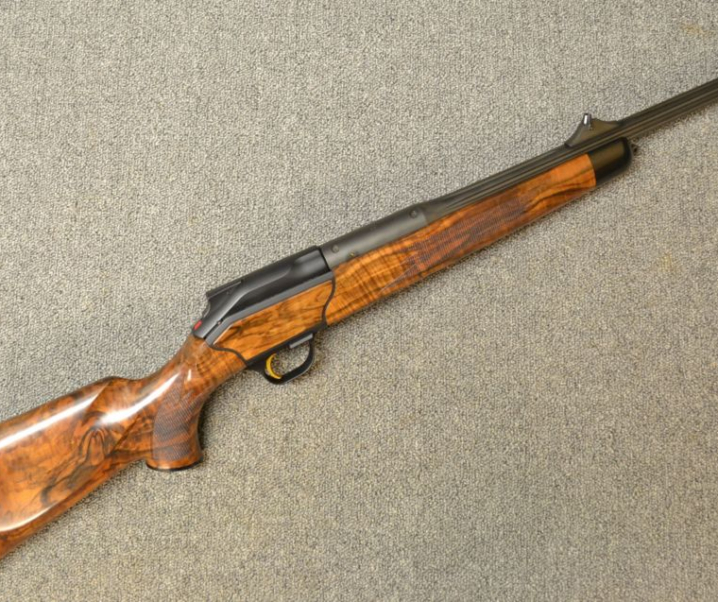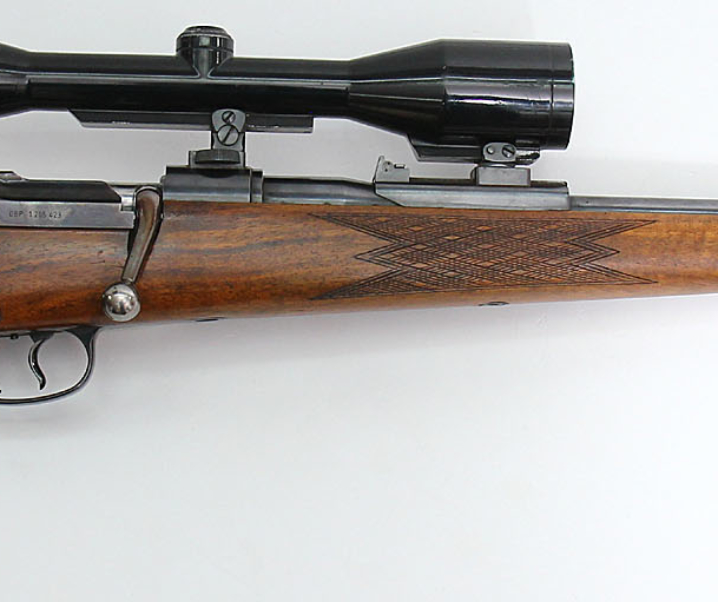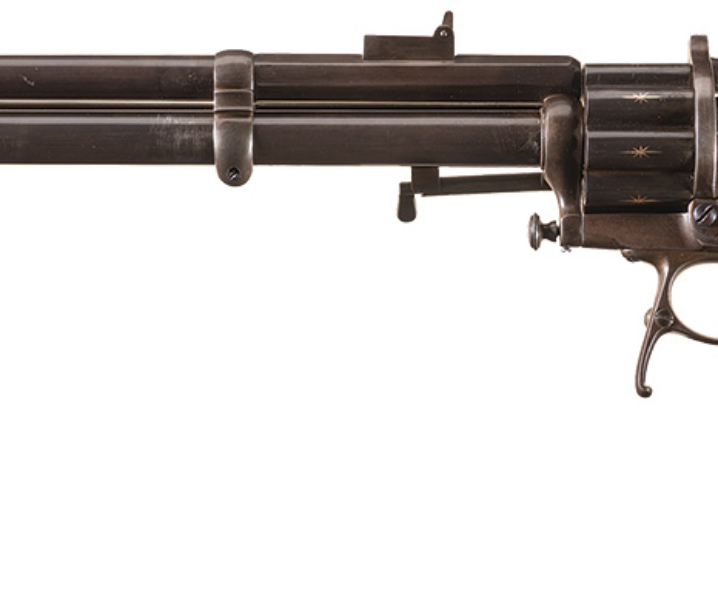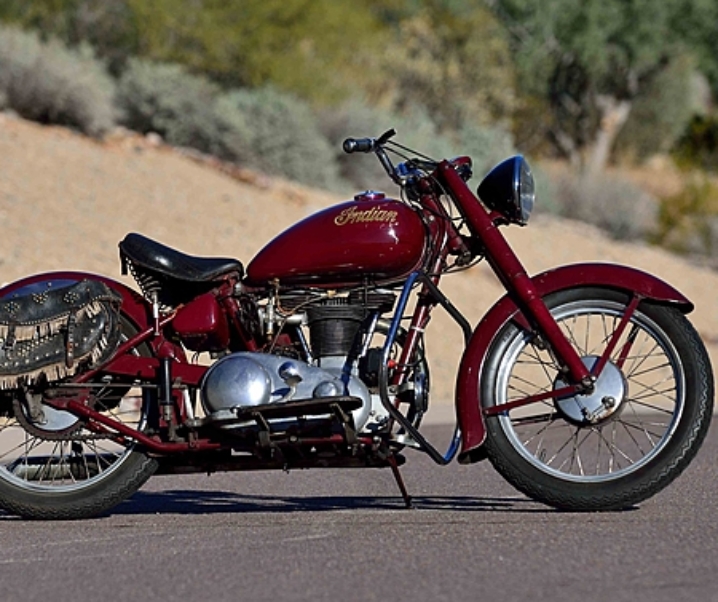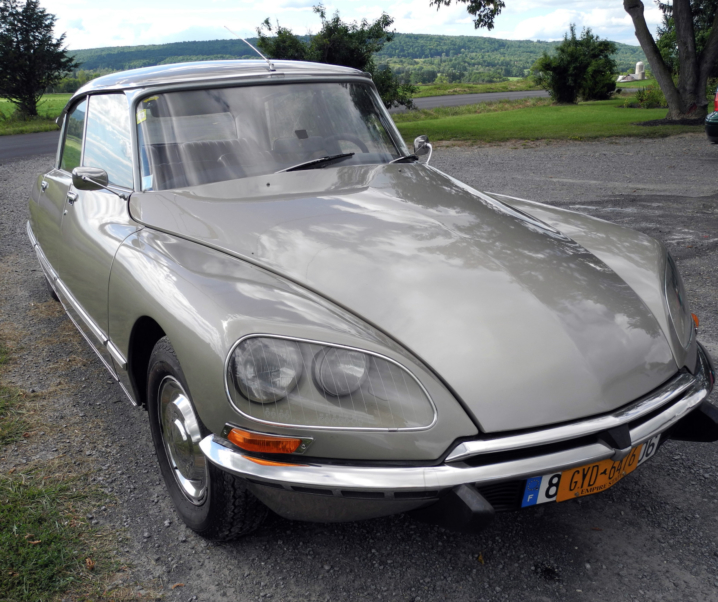If you are one of those blessed souls who is in the market for a stopping double-rifle then you are no doubt thinking about what caliber to have it built in. Nowadays there is an elegant sufficiency of readily available ammunition for rifles that will prove effective on the likes of elephant, hippo, and buffalo, and so for the prospective double-rifle buyer the world is your oyster. The big question however will not be how much energy your chosen caliber can deliver, nor how much “shock power” or “knock-out” value it has. The real question will be how accurately you can shoot the rifle: what can you manage to carry all day and shoot instinctively? Because when push comes to shove, real-world knock down power comes from precise shot placement with a bullet that reliably penetrates as it delivers its dose of hydrostatic shock.
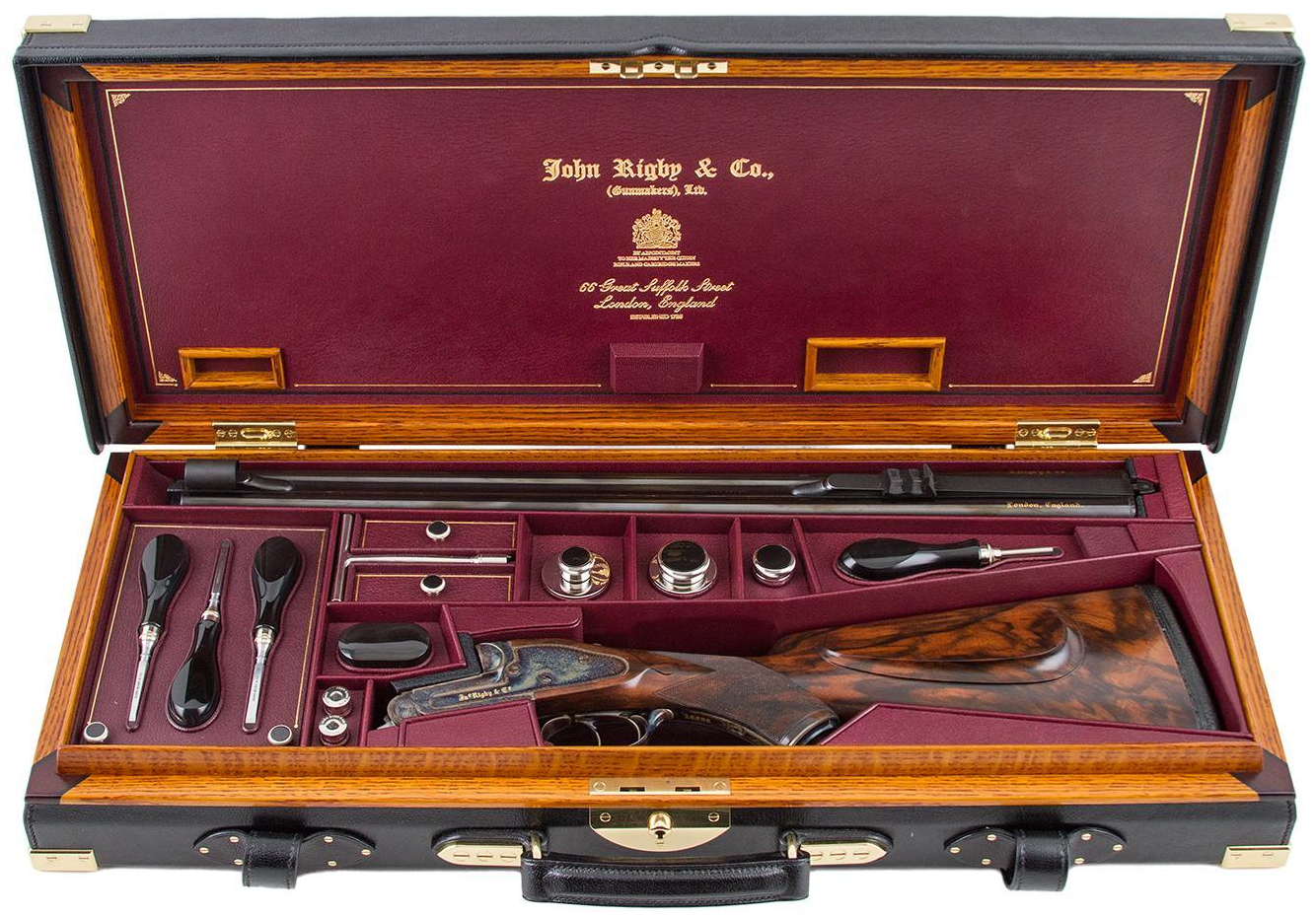
(You can find the sale page for the rifle pictured above if you click here).
If you are looking for a stopping double-rifle cartridge, one with a track-record that stretches back to the nineteenth century, then the .500 Nitro Express may be for you. This is a cartridge that has been described as “A real killer on practically anything” and it has been a favored choice amongst both professional hunters and sportsmen for well over a century.
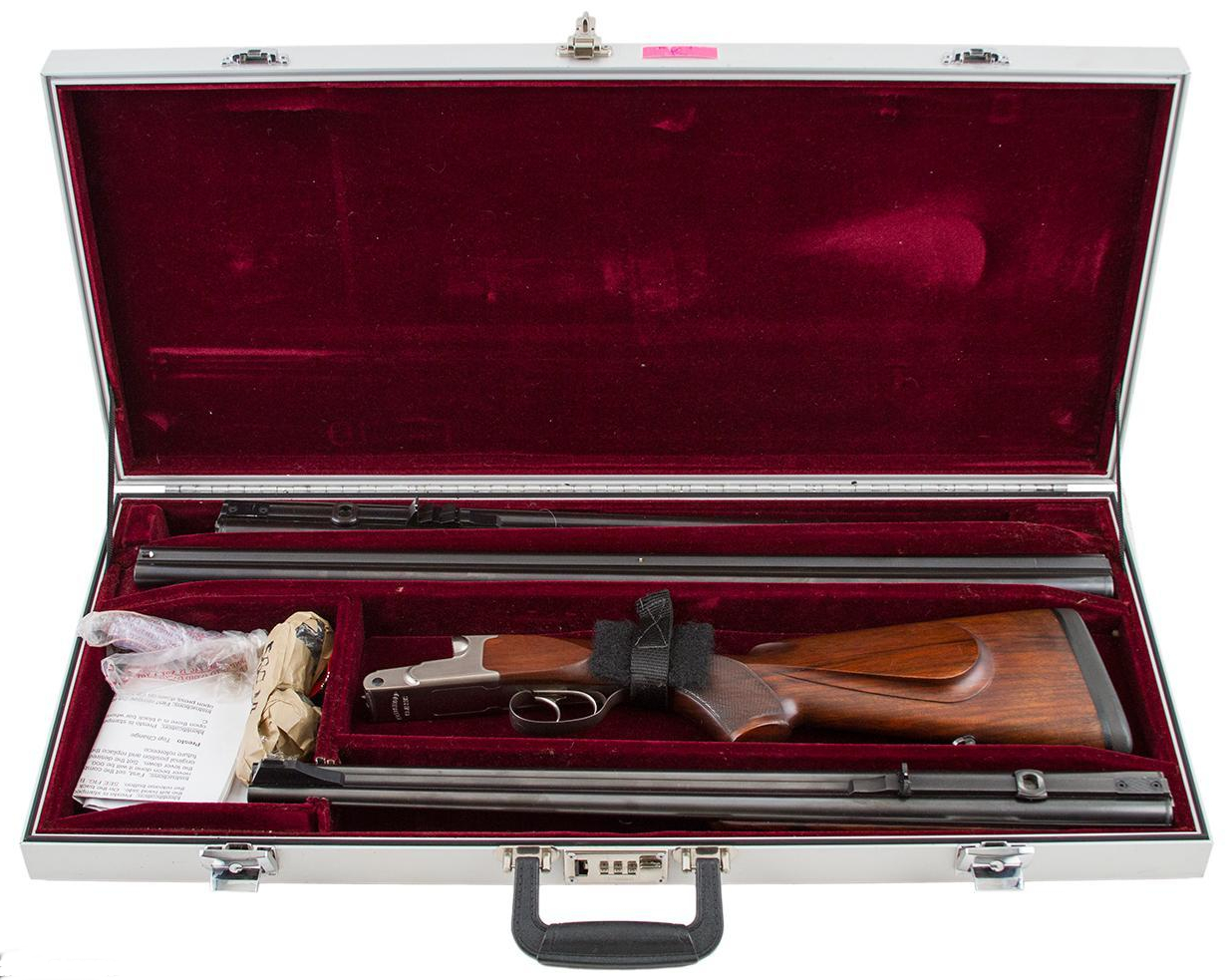
(You will find the sale page for the double-rifle pictured above if you click here).
History
The .500 Nitro Express has a lineage that dates back to its black powder ancestor, the .500 Black Powder Express, which appeared sometime during the 1860’s. The .500 Black Powder Express fired a 440 grain bullet at a respectable 1500fps producing 2198 ft/lb energy. With Alfred Nobel’s invention of smokeless propellants the British created their own version called Cordite in 1889, and it didn’t take them long to create the next version of the .500, the .500 Nitro for Black Powder, in the 1890’s. The intention of the .500 Nitro for Black Powder was that it operated at the low pressures necessary to allow its safe use in the existing black powder rifles. Using Cordite it was not only possible to do this but also to improve on the performance of the .500 Black Powder Express. The .500 Nitro for Black Powder drove a 440 grain bullet at 1,900fps producing 3,258 ft/lb energy. Both these cartridges were good for boar, deer and antelope species but were not intended for dangerous game. At that time the preferred elephant cartridge was the black powder 8 bore, although a few intrepid souls used a 4 bore.
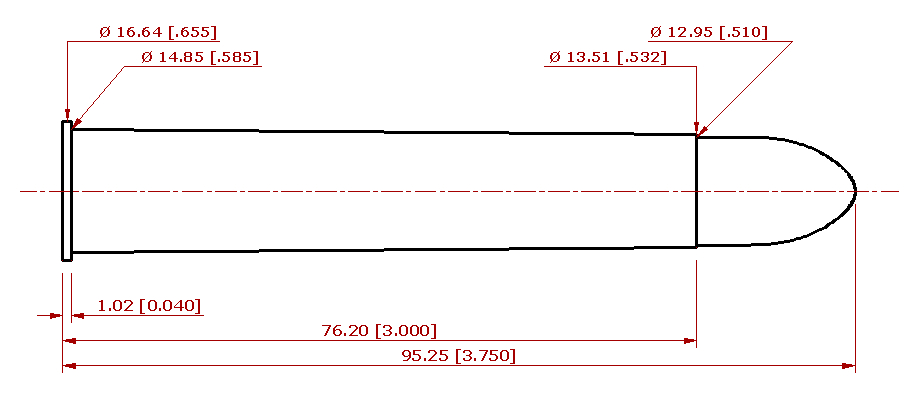
The potential for the large and gently tapered case of the .500 as a pure-bred nitro cartridge for dangerous game was seized upon quickly in the 1890’s and the new .500 Nitro Express made its debut running at nitro propellant pressures and driving a 570 grain jacketed bullet at 2,150fps producing 5,850 ft/lb energy. This was to quickly prove itself on the game fields of Africa and Asia where its advantages over such behemoths as the 8 bore black powder elephant rifles became apparent. Those advantages were its ability to be used in much lighter rifles, typically around 11lb in weight, and the jacketed bullet’s ability to penetrate and deliver dangerous game stopping power where it did the most good.
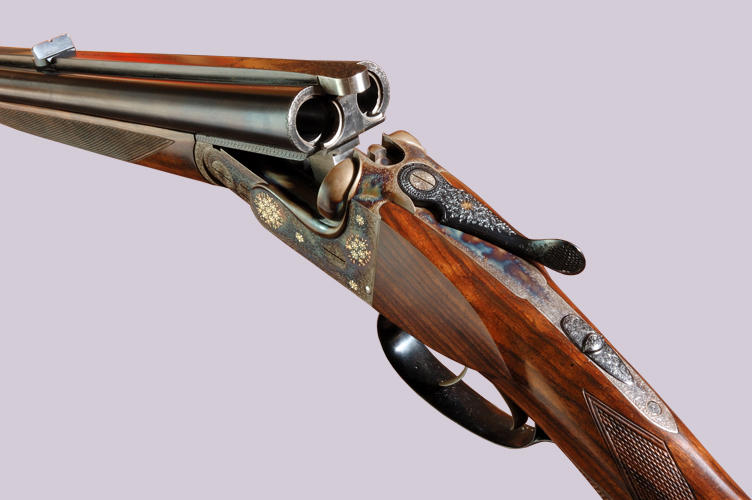
(To visit the web site of Max Ern and family click here).
Nitro propellants gave rise to a number of dangerous game cartridges in the years around the turn of the century prior to the First World War which created significant competition for the .500 Nitro Express. The .450-.470 caliber cartridges became increasingly popular and two heavy stopping nitro calibers appeared, the .577 Nitro Express and the .600 Nitro Express. This tended to result in sporting shooters choosing to purchase a carry rifle in one of the .450-.470 nitro calibers, and an “emergency stopping rifle”, most commonly a .577 Nitro Express, few .600 Nitro Express rifles were made. This led to the .500 Nitro Express being somewhat less popular yet this was not a case of its being in any way inadequate. This was more a case of the .450-.470 nitro calibers being new and fashionable, and the .577 and .600 nitro calibers being seen as something like a shoulder fired cannon capable of stunning an elephant even if the brain was missed. (Note: Modern experience has tended to demonstrate that elephants are not always stunned if the brain is missed, even when using a .600 Nitro Express).
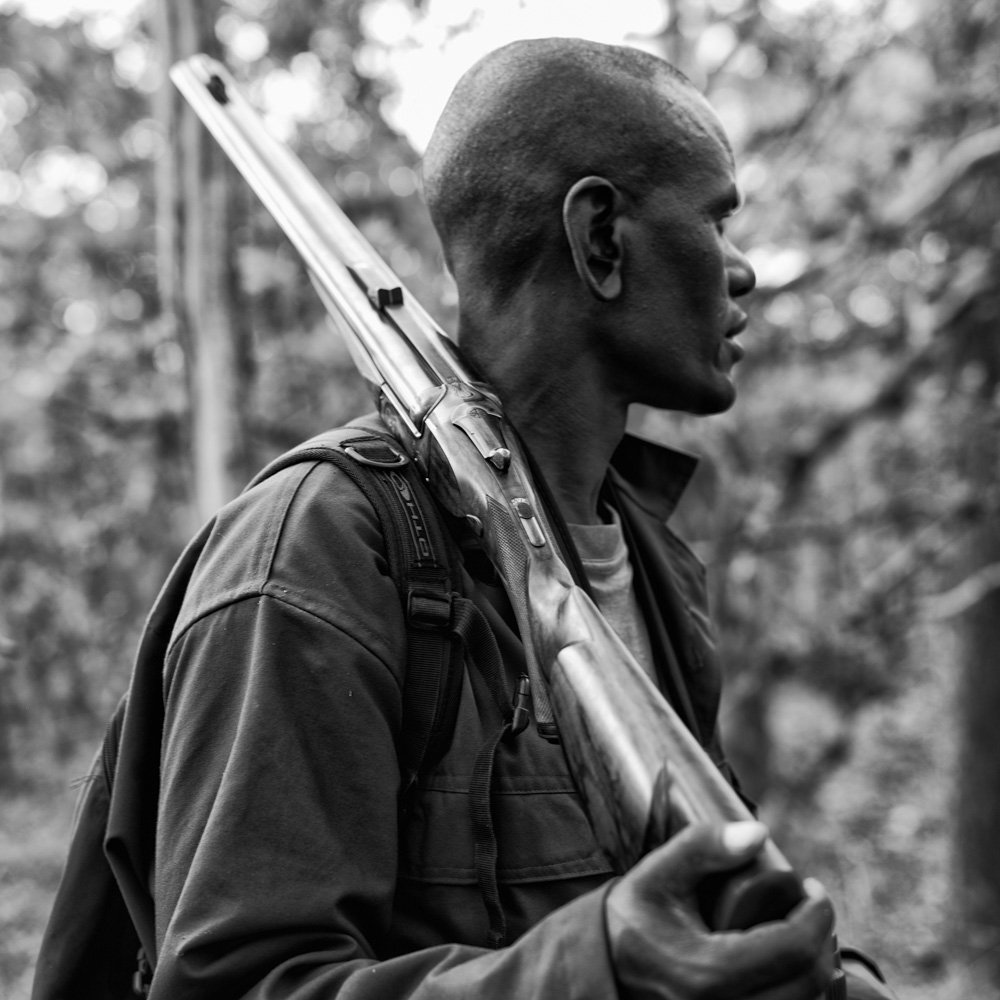
The problem with having two rifles where one might have been better is of course that a hunter might just have need of their “emergency stopping rifle” unexpectedly and simply not have the time or opportunity to retrieve their big cannon from the gun-bearer in time. The other issue is the need to practice with two rifles to be equally competent with both. I tend to think that the fashion of having a carry rifle and an emergency stopping rifle was perhaps the result of some salesmanship on the part of gun-makers. If you are in the business of selling rifles then selling two is much better than selling just one. Modern experience, complimented by the easy access we have to chronographs and ballistic gel nowadays have shown that penetration by a .500 Nitro Express standard factory FMJ loading is significantly better than that of a .577 or .600 Nitro Express: and even in pre-war days the .577 Nitro Express acquired a reputation for better penetration than the .600. So, if you were hunting in India where you would be riding in a howdah on the back on an elephant, the fact that your .600 Nitro Express tipped the scales at around 16lb would not be an issue, and its effect with soft point bullets on a charging tiger would be nothing short of spectacular (as would the effect of its recoil on your shoulder). But if you were in Africa hunting the Big Five on foot then a .500 Nitro Express may well have been a much better choice.
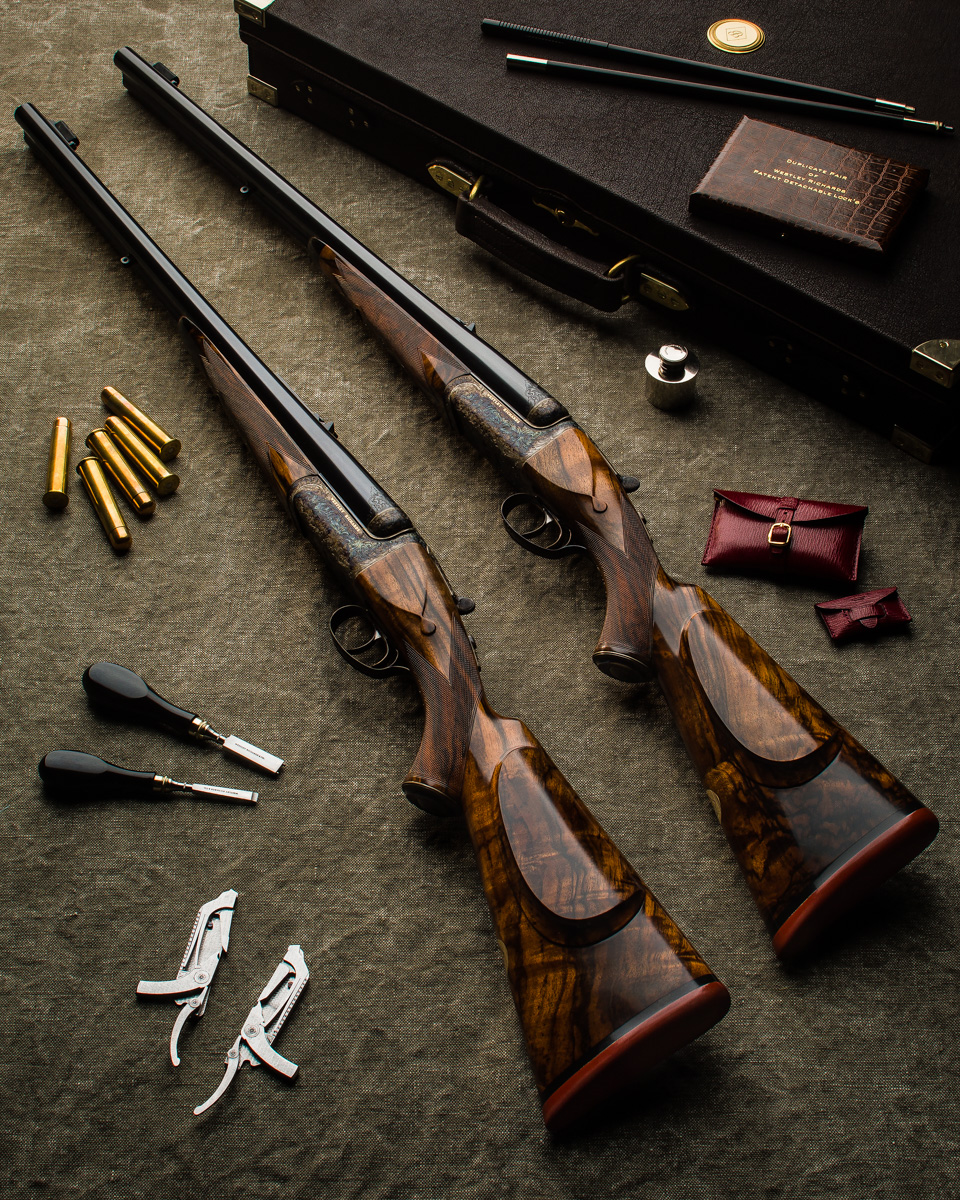
(You will find the full article about the pair of rifles pictured above if you click here).
All the British dangerous game cartridges, and the rifles chambered for them, suffered a hiatus beginning in the late 1960’s, when hunting dangerous game in Africa became less and less accessible, up until it began to be re-discovered by the 1990’s. During that hiatus manufacture of both .500 Nitro Express rifles and ammunition was ceased and both professional hunters and sportsmen alike had few choices other than the .458 Winchester Magnum and the .460 Weatherby Magnum. Happily the .375 Holland & Holland Magnum remained in continuous production both in the United States and Europe, and also served to provide a viable cartridge option for dangerous game, especially buffalo culling.
During the 1990’s however the making of some of the old British big game rifles and cartridges, including the .500 Nitro Express, resumed. Much of the interest in the classic British big game rifles and cartridges was in the United States and as a consequence a number of American ammunition manufacturers put some of the more popular classic cartridges into production. There was also interest in Europe and Norma of Sweden brought back some of these classic cartridges. Australian company Woodleigh Bullets had become a mainstay maker of British big game rifle bullets during the hiatus and, along with cases made by Bell Laboratories, were key to keeping these dangerous game rifles shooting in the period of the 1970’s and 1980’s. Woodleigh Bullets continues to be the most comprehensive supplier of bullets for the old British classic cartridges. It is worthy of note that the .500 Nitro Express is the favorite big game rifle of Geoff McDonald, the founder of Woodleigh Bullets, his having taken many buffalo, elephant and other game over a 30 year period with it.
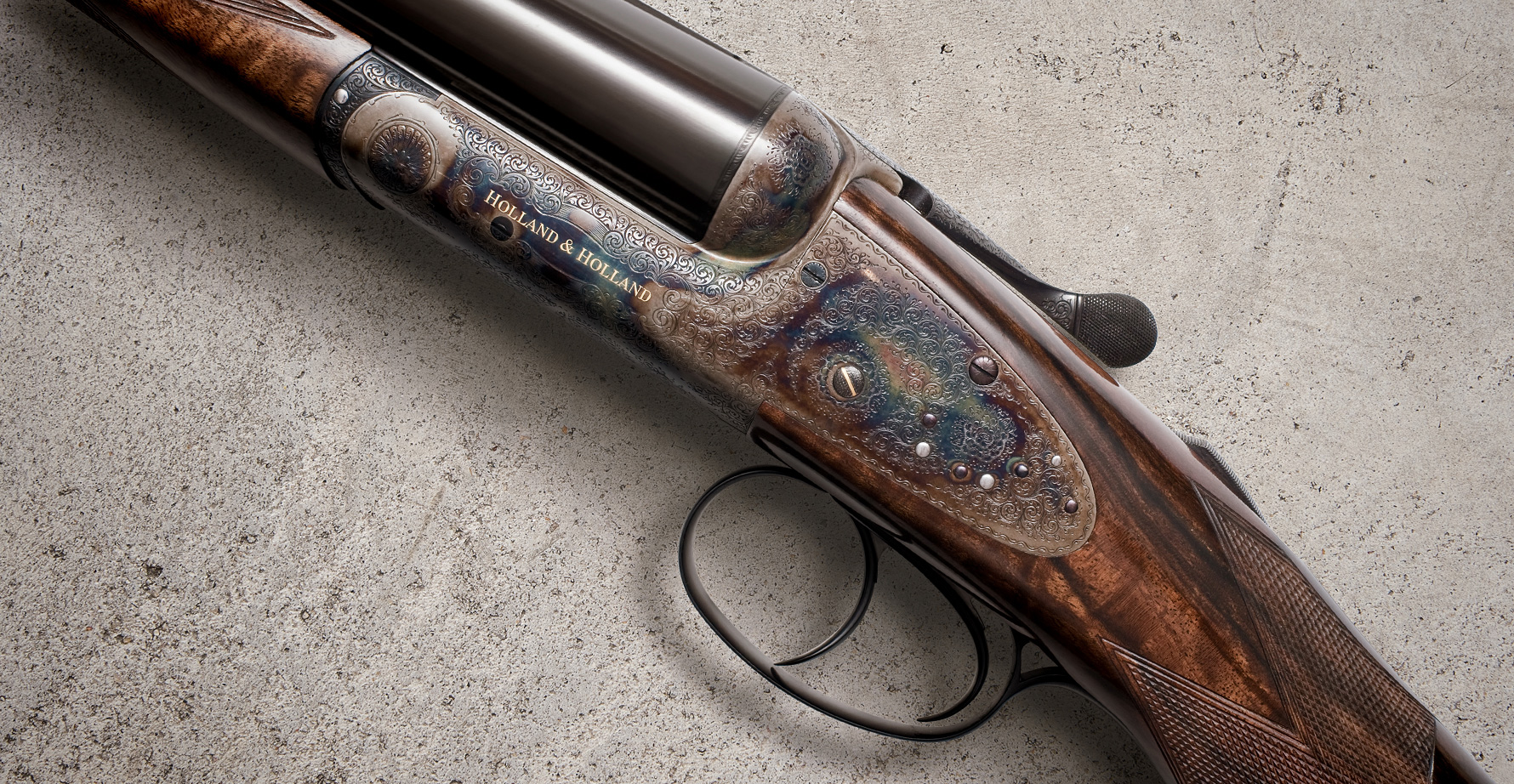
(To see the sale and information page for the above rifle on Holland & Holland’s website click here).
We began this post considering the delightful problem of choosing a suitable cartridge for the double-rifle you might be considering purchasing. Would the .500 Nitro Express be a good choice? Might one not be better off with one of the bigger caliber rifles? There are three things to consider when choosing your dangerous game double rifle; rifle weight, recoil, ammunition cost.
Rifle Weight
A .500 Nitro Express double rifle is typically built to weigh 10.5lb-11lb. As an example the Holland & Holland double-rifle pictured above tips the scales at 10lb 13oz. By comparison a typical heavy sporting rifle in one of the small bore magnums such as the popular 7mm Remington Magnum or .300 Winchester Magnum will commonly weigh 8.5lb before a rifle-scope is attached and up around 9.5lb-10lb with rifle-scope and mounts, depending on how big and heavy or small and light the rifle-scope is. Thus we can see that a double-rifle in .500 Nitro Express is not a lot heavier than a typical heavy sporting rifle: it is of a weight that most people can manage to carry and wield comfortably.
Recoil
Although the mathematical calculation of recoil does not tell the whole story it does give us some indication as to what felt recoil for a given caliber will be like. For a .500 Nitro Express double rifle weighing 10.7lb and firing the Hornady factory ammo with a 570 grain bullet at 2,150fps the recoil is calculated at 67ft/lb. By comparison a factory Winchester Model 70 Safari Express weighing 9lb and firing Hornady factory ammo with a 500 grain bullet at 2.140fps produces recoil of 65ft/lb. If we look at the Weatherby Mark V Dangerous Game rifle weighing 9.5lb firing Weatherby factory ammo with a 500 grain bullet zipping out of that 26″ barrel at a crisp 2,580fps we get 90ft/lb recoil. So, by comparison with the Weatherby, the recoil of the .500 Nitro Express and the .458 Winchester Magnum should seem as gentle as a maiden’s caress! The pure math however does not take into account the weight distribution of a double-rifle, which has the weight of two barrels to help dampen out recoil, and the fact that if the rifle is made to fit you it will further tend to dampen out the felt-recoil. So, if you can manage a .458 Winchester Magnum comfortably then you can handle a .500 Nitro Express equally comfortably.
Ammunition Cost
If you are going to be using a rifle against dangerous game then your ability to use it instinctively and competently is going to be of literal life and death importance – both for you and for those with you. There is only one way to gain mastery of something and that is to practice doing it until that mastery is achieved. So if you plan on going out after dangerous game you need to practice, and that practice needs to simulate as far as possible what you can expect to face in the field. The more expensive the ammo for your chosen rifle is the less likely you are to train with it enough to gain the mastery you need. .500 Nitro Express ammo is a commonly available item and there is a good selection on Midway USA with prices around USD$132-$225 per box of 20. by comparison .458 Winchester Magnum ammo on Midway USA is listed around USD$100-$180 per box of 20, and .375 Holland & Holland Magnum ammo sells for USD$60-$96 per box of 20. So the price of .500 Nitro Express ammo is about 30% more than that for common .458 Winchester Magnum ammo and a bit over double that for .375 Holland & Holland Magnum.
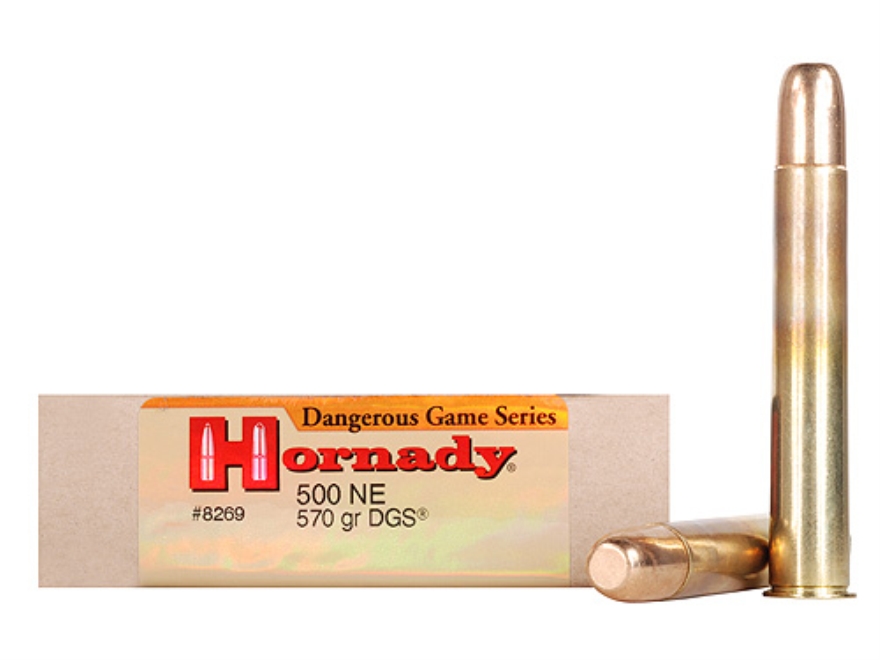
Practice Courses of Fire
You can make up your own practice courses of fire but the ones created for the SSAA Big Game rifle clubs in Australia are good. Australia is home to a healthy Asian Buffalo and Banteng population so hunting dangerous big game is accessible and affordable. The SSAA Big Game Rifle “Stopping Double-rifle” match requires 10 rounds comprising 2x shots at 50m in up to 5 minutes, then 4x shots standing unsupported at 50m in 16 seconds, then 4x shots standing unsupported at 25m in 16 seconds. The other course of fire to practice is the “Charging Animal” which requires targets at 75m, 50m and 25m. The shooter fires two shots on each target in a total of 35 seconds. The targets used are the standard 50m ISSF (i.e. Olympic) target.
You’ll find the SSAA Big Game Rifle rule book with all the courses of fire if you click here.
These courses of fire serve as examples of the sort of training one needs to do with a double-rifle for dangerous game. It will take some time and ammo in order to become completely comfortable with your double but a .500 Nitro Express is no more a shoulder killer than an off the shelf .458 Winchester Magnum, and as we’ve seen, the ammo is not much more expensive. You should also feel free to hunt with your .500 Nitro Express. Why not use it for boar shooting or elk for example? There is no such thing as “overkill”, there is only “underkill”. The .500 may surprise you in that it does not “explode a deer”. The bullets for this caliber are strongly constructed and will not expand explosively.
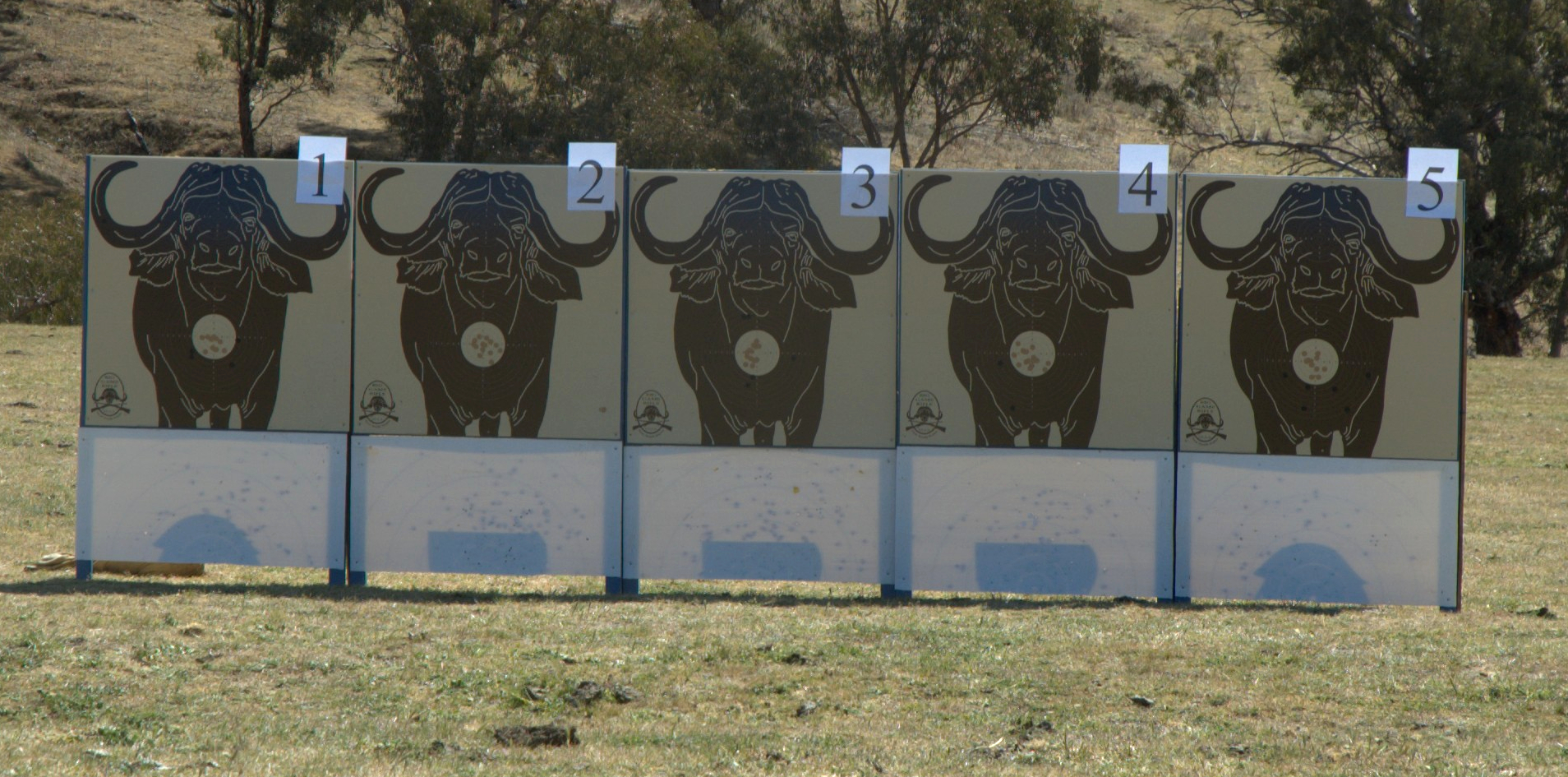
Ballistics
Although intended to be a dangerous game cartridge the .500 Nitro Express has the potential to be used out beyond 100 yards. Assuming a 4″ vital zone the Maximum Point Blank Range calculation comes up at 180yards, and if zeroed at 200 yards the trajectory height at 100-150 yards only slightly exceeds 4″ with the Barnes Triple Shock X bullet which has a spitzer point and a ballistic coefficient of .369. So the .500 Nitro Express could be used on non-dangerous plains game out to about 250 yards, especially if fitted with a telescopic sight in quick detachable mounts. Using the Federal factory ammo driving the Barnes Triple Shock X bullet at 2,100fps and a 200 yard zero the drop at 225 yards is 2.81″, and at 250 yards it is 6.42″.
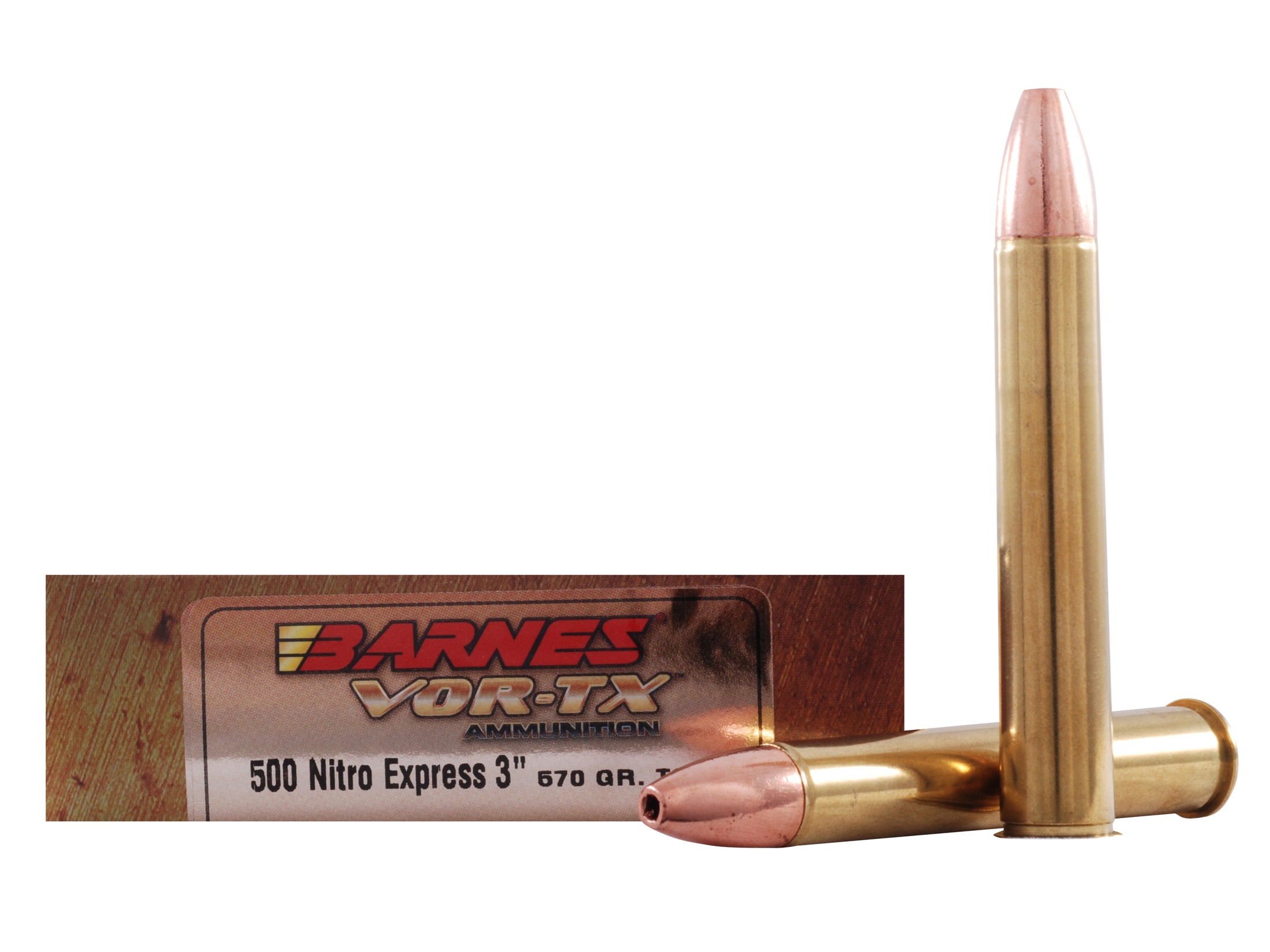
When used with open sights the zero should be 100 yards (or meters) and thus set the maximum trajectory height is less than half an inch with the standard 570 grain bullet at the standard velocities of 2,100-2,150fps. Energy levels are typically around 5,850ft/lb at the muzzle and about 4,535ft/lb at 100 yards. By comparison the high performance Hornady Superformance .458 Winchester Magnum loading with its 500 grain DGX bullet at 2,140fps delivers 5.086ft/lb at the muzzle and 3,888ft/lb at 100 yards. So the .500 Nitro Express delivers about 30% more energy. People who have used the .500 Nitro Express tend to report a noticeable improvement in knock-down power by comparison with the .458 Winchester Magnum. Add to this the .500 Nitro Express operates at slightly lower pressures so it extracts more easily, something that is important if you are using a double-rifle.
Concluding Thoughts on the .500 Nitro Express
As we have seen, the .500 Nitro Express delivers about 30% more power (as measured in energy) by comparison with a .458 Winchester Magnum, and does it with almost the same recoil, in a rifle that is only 1lb heavier. The .500 Nitro Express ammo is a little more expensive but is certainly not going to break your bank account, especially if your bank account is capable of surviving a double-rifle size dent being made in it. A .500 Nitro Express is a rifle you can comfortably carry all day on a hunt without needing it to be ported for you by a gun-bearer, and it has a flat enough trajectory curve to be used out to 200-250 yards on non-dangerous plains game in addition to being a reliable stopping rifle against dangerous game. The .500 Nitro Express has been enjoying something of a resurgence in popularity and with good reason: people are beginning to discover what a superb cartridge it is.
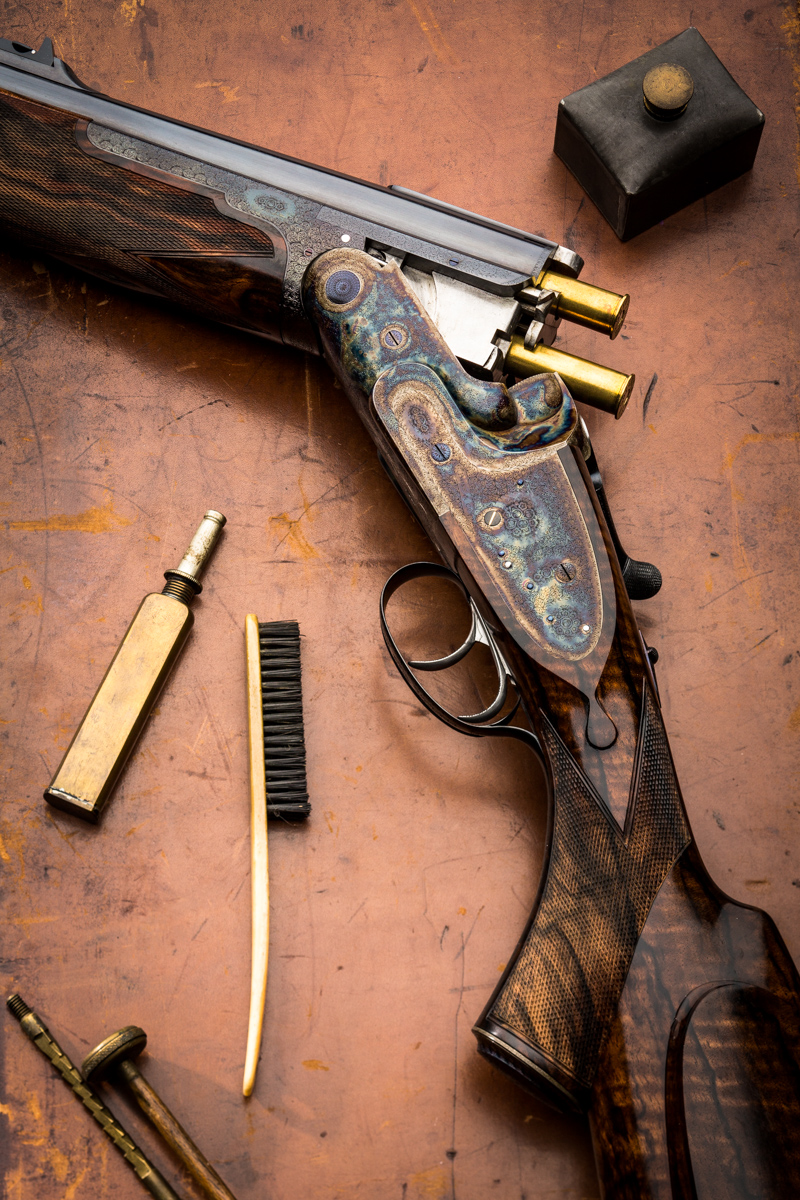
(You will find the article on the above pictured rifle if you click here).

Jon Branch is the founder and senior editor of Revivaler and has written a significant number of articles for various publications including official Buying Guides for eBay, classic car articles for Hagerty, magazine articles for both the Australian Shooters Journal and the Australian Shooter, and he’s a long time contributor to Silodrome.
Jon has done radio, television, magazine and newspaper interviews on various issues, and has traveled extensively, having lived in Britain, Australia, China and Hong Kong. His travels have taken him to Indonesia, Israel, Italy, Japan and a number of other countries. He has studied the Japanese sword arts and has a long history of involvement in the shooting sports, which has included authoring submissions to government on various firearms related issues and assisting in the design and establishment of shooting ranges.

